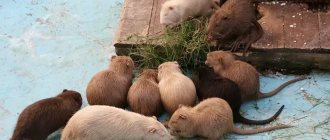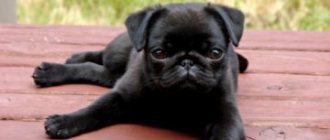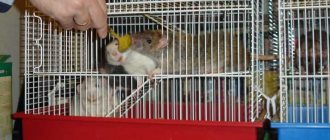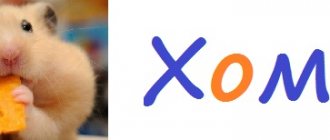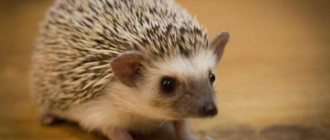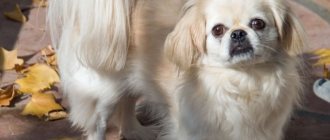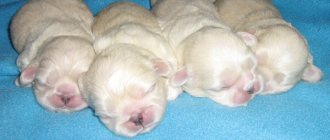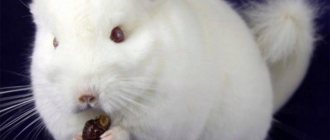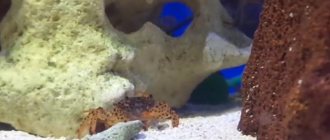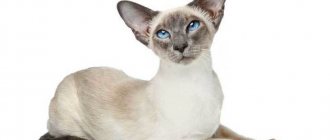The Pekingese is the oldest decorative dog. He is distinguished by his independent character, natural charm, and loyalty. The long adorning hair makes him very attractive. The Pekingese is ideal for keeping in an apartment due to its compactness and calmness. Despite its small size, it is always ready to rush to defense.
Interesting Facts:
— was bred in China, where he was considered the embodiment of guardian spirits, a symbol of power;
— the Pekingese is a relative of the pug; dog handlers call it the “Chinese pug”;
- according to legend, he is the cub of a lion and a monkey, inheriting his father’s temperament and his mother’s charm;
— came to Europe 155 years ago. Another half a century passed before the privileged animal was released into the world. Before this, they believed that only nobles were worthy of looking at dogs.
Origin story
There is no exact information about the origin of the Pekingese breed, because its roots go back to ancient times. Small dogs lived in China and Tibet tens of hundreds of years ago. The earliest evidence of their existence dates back to 400 BC - bronze figurines with images of Pekingese were discovered during archaeological excavations. Researchers believe that, unlike other companion breeds, Pekingese owe their appearance not to monks, but exclusively to the nobility - others were forbidden to breed them. Little lions were perceived as part of the imperial family. When the ruler died, the pet was buried with him.
Despite their enormous popularity in Ancient China, the Pekingese were unknown for a long time outside this territory, because after the sack of Genghis Khan, China lived in isolation from other countries. This period ended when the British and French colonialists captured the imperial palace in 1860. The ruler's family fled from the residence, ordering the destruction of all Pekingese. Those who did not manage to leave the palace committed suicide. In the sleeves of their kimonos, the conquerors found 5 dogs, which were taken to England and presented to the royal family. From this moment the breed began to spread in Europe. Today, the blood of these 5 Royal Pekingese is present in many lines of modern dogs. The popularity of dogs was gaining momentum, by 1921 they were in most countries and were even exported to China.
The love for babies intensified in the post-war years, which contributed to some deterioration in the quality of the descendants of the imperial dogs. In pursuit of profit, unscrupulous breeders allowed defective individuals to reproduce. The first breed standard was approved in 1898, the current one in 2004. Before purchasing such a dog, you need to carefully analyze its compliance with the basic characteristics.
Description of the breed - colors
The appearance of the Pekingese has changed significantly during the existence of the breed; if initially they strongly resembled the Japanese Chins, now they differ at first glance. The weight of a purebred Pekingese is from 3.2 to 5 kg - heavier individuals are considered defective. There is also a so-called pocket variety of mini Pekingese weighing no more than 2.5 kg. These are descendants of the dogs that Chinese emperors once wore in their kimono sleeves, but are not an independent breed. The permissible height of a dog at the withers is from 15 to 25 cm.
There are no dwarf Pekingeses!
A purebred dog must meet the following parameters:
- large head with a wide skull and a sharp transition to the muzzle;
- the neck is short and thick;
- the eyes are large, round, with black eyelids;
- the nose is quite large and flattened, with black pigmentation;
- the ears are shaped like hearts and hang down, covered with long hair;
- a mask on the face is not required in all cynological associations, but everyone recognizes that it decorates the dog;
- the chest is wide, powerful, with convex ribs;
- back straight;
- paws are short, strong, slightly turned to the sides;
- the tail is set high and lies on the back.
The main distinguishing feature of the Pekingese is its coat. It is thick and tough, with a dense undercoat. A luxurious mane is required on the shoulders and neck. The guard hair should be straight. Curliness is a disqualifying sign. Only mestizos are smooth-haired. The traditional color of the Pekingese is red, but the European standard allows for almost any coat color:
- sand;
- grey;
- black;
- white.
Multicolor colors are also allowed; only liver coats and albino dogs are considered discarded. Other colors do not affect the overall rating. It should be emphasized that it is not possible to predict the color of puppies - all Pekingese have genes for different colors. In addition to external characteristics, the standard provides for distinctive character traits of the imperial companions.
Character
A true purebred Pekingese can be easily distinguished from a selective breed by its character. Dogs from an unverified breeder can be hysterical, fearful or aggressive, with an unstable psyche. Purebred individuals are calm and balanced. Pekingese are the most independent and self-confident representatives of decorative breeds. They love their owner and prefer to spend time with him, but they will never be intrusive; they will calmly wait for the person to return home without throwing tantrums. At the same time, they are mobile, active, and have excellent guard qualities. Funny lion cubs need to be accustomed to the company of strangers from childhood. If this is not done, Pekingese, who are already wary of strangers, can greet guests very aggressively.
This breed is most likely not suitable for a family with a small child. They are not as fragile as other indoor dogs, but children can still injure their pet while playing. In addition, Pekingese do not tolerate rough handling and can bite. But for older people they will be excellent affectionate companions. They get along well with other pets. They have virtually no hunting instinct, so you won’t have to worry about the safety of hamsters, rats and other pets. It is still not worth keeping a Pekingese with large dogs, due to the risk of injury.
Care and maintenance
Pekingese do not require any special living conditions. The only thing when preparing a place for a dog is to choose a corner from which you can clearly see the entire room or at least the front door. They like to be aware of events happening around them. It is better to build your pet a bed with a soft mattress or buy a special house. Pekingese cannot be kept outside. Thanks to his luxurious wool, he is not afraid of frost, but he can die from overheating.
Regular walking is not required for this breed. They are quite mobile, they spend energy at home - this physical activity is enough for the Pekingese. But the dog certainly needs fresh air and additional emotions. Therefore, it is better to take walks daily. It will make your pet happy if you take a ball outside so that he can play and run after it.
Regarding hygiene, the following rules must be observed:
- Check your eyes regularly and clean them of dirt. If redness appears, treat them immediately and show the baby to the veterinarian.
- Trim the claws periodically (about once every 14 days) with scissors to prevent them from growing into the paw pads.
- Clean the muzzle every day with a cotton swab dipped in warm water, paying special attention to the crease on the nose. Bacteria can accumulate in this area, causing inflammation.
- Clean your ears from wax and dirt weekly with a special product (for example, Beaphar Ear-Cleaner) or warm water with the addition of hydrogen peroxide or a few drops of apple cider vinegar. After the procedure, the auricle should be wiped dry.
You should not try to clean the ear deep from the inside - this can damage the eardrum!
Feeding
First of all, the Pekingese owner must decide whether he will feed his pet natural food or commercial food. There is an opinion that lazy owners feed dogs dry food so as not to cook. But that's not true. On the contrary, novice dog breeders are advised to stick to dry food that contains all the necessary vitamins and microelements. The main thing is to choose high quality food. The veterinarian will select the most suitable product based on the pet’s health status, age and other characteristics. Super premium food without preservatives, soy, flavor enhancers and dyes is recognized as the best. Breeders recommend the following brands for decorative breeds:
- Eukanuba;
- Royal Canin Mini Exigent;
- Royal Canin Gastro Intensive.
Special mention is made of the new generation of food – holistic. In their production, only natural ingredients with prebiotics and probiotics are used. For example, Bosch Soft. Another development of recent years is Holistic+. These are semi-moistened feeds that are closest to natural feeding. This food is not cheap, but it is considered economical because this food is better absorbed and saturates the dog faster.
If you decide to feed natural food, the following products must be included in the Pekingese diet:
- lean meat;
- buckwheat;
- vegetables;
- fermented milk products with a low fat content and without synthetic additives;
- rice;
- fruits;
- sea fish;
- greenery;
- cheese;
- eggs;
- beef tripe.
On the recommendation of a veterinarian, additional vitamin and mineral complexes should be given.
Meat and offal must first be boiled and chopped; beef can be given raw, but it must also be cut. It is better to pre-freeze meat foods to avoid infection with helminths. Boil the cereals well and serve with minced meat, with the addition of vegetable oil (2 tsp per bowl). Give vegetables raw, but grate them. Choose low-fat varieties of cheese, preferably home-made, and feed them little by little as a reward. Eggs should be boiled or given as an omelet, and a raw yolk should be mixed into the porridge once a week.
When feeding the Pekingese, you should take into account the characteristics of the breed. So, these dogs have poorly developed fangs, so even dry food needs to be slightly soaked with water. Otherwise, the pet will swallow the pieces whole, the food will be poorly digested and cause digestive disorders and abdominal pain. Another important point is that Pekingese are prone to obesity and should never be overfed. It is necessary to control body weight: weigh a puppy once a week, an adult dog once a month.
What to feed a puppy
Until 2 months of age, Pekingese puppies need to be fed 6 times a day. At 3 months, you can exclude one meal, but only if the baby is full. From 3 months, little lion cubs are given 4 meals a day. 6-month-old pets are fed three times a day, and by 12 months - 2 times, like an adult dog. As for complementary feeding, up to 4 weeks the baby eats only breast milk. The breeder, regularly weighing the offspring, monitors whether the bitch has enough milk. If not, supplement it with a special mixture. They gradually transfer to adult food, adding industrial feed or boiled minced beef, milk and cottage cheese. By 3 months, they begin to give finely chopped boiled meat and grated vegetables. If you feed your puppy commercial food, but it does not gain enough weight, you should replace it with holistic food. From 4 months, the Pekingese begins to grow rapidly, the daily food intake during this period should be increased and the following products should be added:
- raw potatoes;
- beef tripe;
- zucchini;
- egg;
- low-fat cheeses (little by little);
- fruits.
All products must be thoroughly crushed. Pekingese dogs begin to change their teeth at 5 months, so they are not allowed to eat hard objects or foods. You can give heavily boiled cartilage. The baby will happily chew on this delicacy, which will also relieve itching in the gums. After six months, you can start giving your puppy boiled sea fish without bones, shellfish and kelp. Add all foods to complementary foods gradually, one per week. After a year, the Pekingese switches completely to an adult diet.
Grooming
Keeping your Pekingese's luxurious hair in perfect condition is easy with daily care. You need to comb your baby correctly:
- Place the dog on a table covered with a rubber mat to prevent the animal from slipping.
- Spray the wool with conditioner or anti-tangle spray. It should be slightly damp (but not wet). Dry hair should not be combed.
- Use a massage brush first along the growth of the fur, and then against it.
- Comb well along the hair growth with a long-toothed comb.
- Lift the hair and sprinkle with talcum powder or baby powder.
- After 15 minutes, comb with a massage brush. Take special care in the armpits and behind the ears, as tangles often form there.
The Pekingese should be washed no more than 3 times a year. The rest of the time, the coat can be cleaned with talcum powder or dry shampoo. For long-haired dogs, Bio-groom, Ring-5 and others powders are suitable. There is no need to cut the Pekingese, but the owners give their dogs a haircut in the summer so that the dog does not suffer from the heat. The breed standard does not provide for grooming.
Pekingese diseases
Purebred Pekingese are distinguished by good health, but they, like other breeds, have characteristic predispositions to certain diseases. This is due to the characteristics of the body of certain dogs. Due to the specific structure of the body (short limbs combined with a long body), the Pekingese spine is subjected to increased stress, which can lead to the development of such diseases of the musculoskeletal system: osteochondrosis, disc herniations, articular pathologies, sprains. Animals that are overweight and have underdeveloped muscles are more at risk. Pekingese spines often suffer when jumping from heights.
The owner can recognize the onset of problems by the following signs:
- stiffness of movements;
- lameness;
- skewed to one side;
- passivity;
- difficulties when changing position (rising from a lying position is especially difficult);
- pain from touching the back;
- restless behavior.
Pekingese are prone to discopathy - displacement of the vertebral discs. This is a very dangerous condition. The dog begins to weaken, trembling appears in the front and hind legs. Without assistance, the hind legs fail. In case of pathologies of the spine, it is necessary to contact a veterinarian as soon as possible. Only a doctor can choose adequate treatment.
Eye diseases
Eye pathologies occur in Pekingese as often as problems with the spine. This is due to the specific structure of the skull, which does not require a deep seating of the eyeball. As a result, three-quarters of the eye is located outside and is exposed to external influences. The consequence of this is the following eye diseases:
- Cataract. It is typical for older dogs; with pathology, the pupil becomes cloudy and the dog loses vision.
- Infection of the cornea causes severe pain, the eyes become sour and cloudy.
- Inflammation of the cornea, in which the eyes fester, can be treated at home by wiping the affected organ with an antiseptic solution. Antibiotic drops are also prescribed.
Even a minor injury to a Pekingese can lead to eye loss. To be prepared to provide first aid to your little friend, it is better to take a first aid kit with you for a walk. If the eye falls out, you need to take a bandage or a clean handkerchief soaked in saline solution. Use it to hold the eye in your hand without squeezing it. You won’t be able to straighten the apple yourself; this can only be done by a qualified specialist if you contact him immediately. Otherwise the dog will go blind.
Respiratory diseases
The Pekingese's thermoregulation system is imperfect. These dogs have a short nasal passage, so the inhaled air does not have time to warm and cool sufficiently. All this leads to the following respiratory diseases:
- laryngitis;
- tracheitis;
- bronchitis.
The development of the disease can be noticed by the nature of breathing - it becomes heavy, hoarse and noisy. It happens that Pekingese open their mouths wide and try to capture as much air as possible. The normal breathing rate of a Pekingese is 15 to 30 breaths per minute. If it occurs more often or less frequently, you should consult a specialist. The dog needs to be provided with complete rest. Due to the non-standard structure of the skull, Pekingese have pathological development of the palate: it may be too long or with a cleft. Such problems can only be eliminated surgically. Of the nasal diseases, Pekingese most often suffer from rhinitis. It can be noticed by green discharge with an unpleasant odor. Depending on the causative agent of the infection, the veterinarian will prescribe antibacterial or antifungal medications for the dog.
Problems with stool
Digestive disorders in Pekingese are quite common, so the owner must be prepared for them. Constipation in a dog can occur for various reasons. From the anatomical features of the anus to serious diseases.
Most often this is:
- intestinal obstruction;
- poisoning with drugs or chemicals;
- oncological pathologies.
The first thing the owner can do is give an enema. If this does not help, the dog is given laxatives based on essential oils or herbal ingredients. Antispasmodics (for example, No-shpa) will help in case of spasm of intestinal smooth muscles. If the anus is blocked, you need to carefully squeeze out excess feces, and after the dog has emptied, put on suppositories (Anuzol or Anestezol).
Diarrhea may be a symptom:
- hepatitis A;
- enteritis;
- acute liver failure;
- salmonellosis;
- parasite infestation.
Most often, loose stools in dogs are the result of poor nutrition. In this case, you should stop feeding for a day. Drink weak tea, adding a little sugar to it. Good for diarrhea:
- Activated carbon;
- rice water;
- oatmeal;
- herbal pharmaceutical preparations.
If the diarrhea does not go away, you will need the help of a veterinarian who will select antibacterial drugs. One thing to remember is that in a dog as small as the Pekingese, dehydration can begin within a few hours. To restore the water balance, the pet is prescribed droppers with rehydron, saline and glucose. If there is an inflammatory process in the intestines, it is good to give the Pekingese a decoction of sage or chamomile and enema the dog. Pathology can be determined by the following symptoms: abdominal pain and nausea. The baby's stomach grumbles, and when he tries to pick him up, he begins to whine. In this case, consultation with a specialist is mandatory. Such symptoms may indicate more serious diseases, including plague and cancer pathologies.
Diseases of the cardiovascular system
Pekingese can suffer from cardiovascular pathologies. The most common problems in dogs of this breed are hemophilia, heart attack, congenital defects, and others. Such diseases can be suspected by the following symptoms:
- dyspnea;
- weakness;
- bloating;
- cough;
- blue gums;
- fainting;
- developmental delay.
If your dog has at least one or more of the above symptoms, you should immediately consult a doctor. Treatment of such pathologies must be carried out under the strictest professional supervision, otherwise the animal will die.
What to do if you are bitten by a tick
If your dog is bitten by a tick, it must be removed as soon as possible. It is better to do this in a clinic, but if visiting a veterinarian is not possible, you can try to remove the insect yourself. To do this you need:
- treat the skin around the tick with vegetable oil;
- hold the beetle with tweezers and gently pull it out using rotational movements;
- treat the bite site with an antiseptic.
It is necessary to ensure that the tick comes out completely; if the head remains under the skin, it will not be possible to remove it without the help of a specialist. After removing the insect, you need to carefully monitor the pet's health. The tick can be a carrier of piroplasmosis (a serious infectious disease).
Age-related diseases
Elderly Pekingese are prone to heart and urinary tract diseases. Thus, males of this breed are often diagnosed with urolithiasis in old age. Older Pekingese may suffer from:
- skin diseases;
- ear problems;
- tooth decay.
In order for the dog to feel vigorous and healthy for a long time, you need to follow the rules of feeding and maintenance. With proper care, the average life expectancy of a Pekingese is 14 years. Vaccination will protect your dog from major diseases.
Vaccination
Modern complex vaccines for dogs protect the animal from the most common and dangerous infections, including rabies, plague, rhinotracheitis, coronavirus infection, parvovirus enteritis, leptospirosis, and adenoviral hepatitis. In Russia, the following drugs are more often used: Eurican, Nobivak, Vanguard-7, Hexadog, Vanguard-5, Duramun. The dog tolerates them well and without complications.
The Pekingese is vaccinated according to the following scheme:
- from 6 to 8 weeks - first vaccination;
- at 10 weeks - revaccination;
- after changing teeth - the third vaccination.
Further, annual vaccination is provided. Every six months, Pekingese are dewormed and their fur is regularly treated for parasites. After these procedures, vaccination can be given no earlier than a week later. Only healthy animals are allowed to be vaccinated.
Vaccination schedule
The first vaccinations for puppies are usually given by the breeder, and the rest should be taken care of by the new pet owner.
| Pet age | Vaccination |
| 2 months | The pet is vaccinated against leptospirosis, distemper, hepatitis, adenovirus infection, parvovirus enteritis, and proto-influenza. |
| 3 months | Revaccination against the same diseases. |
| 6 months | Rabies vaccine is administered. |
| 12 months | Vaccinations are repeated. |
| Annually | The dog receives the same set of vaccinations throughout its life. |
Estrus, mating, birth
The Pekingese's first heat occurs at eight months of age, lasts approximately 14 days and repeats every six months. The ideal age for mating is from 1.5 to 2 years, but not older than 3 years. Late first mating can cause many complications, including false puppies; if the situation is repeated many times, the bitch is sterilized.
It is better to agree with the owner of the male dog in advance and choose a backup option so as not to miss days favorable for conception. It is not recommended to feed or bathe the bitch before mating. Dogs must be introduced carefully so that they do not injure each other. Pekingese are usually bred on a table, with the owner holding the bitch. The condition of both animals must be monitored; the crossing process takes a lot of energy, and the Pekingese may lose consciousness. After a couple of days, the procedure should be repeated to consolidate the result. Proper mating of Pekingese is the key to the birth of healthy offspring. After 20 days, the bitch needs to have an ultrasound to make sure that pregnancy has occurred and to provide the dog with proper care.
Pregnancy in the Pekingese lasts on average 63 days. If the litter is large, the puppies are born a little earlier; if the litter is small, the puppies are born a little later. Viable healthy offspring are born from 53 to 71 days after mating. You need to prepare for the birth itself and agree with the veterinarian so that he can quickly come to the rescue if problems arise.
Signs of approaching labor are:
- drop in body temperature to 37 degrees (about two days before birth);
- prolapse and thickening of the abdomen;
- thick discharge from the loop.
After this, the waters recede. You cannot leave the bitch alone at this moment. Immediately after birth, puppies should not be brought to the dog’s face; in firstborns, the maternal instinct usually does not awaken immediately, and the pet may behave unpredictably. During the postpartum period, it is necessary to give the bitch as much attention as possible so that she does not become jealous of the owner for the puppies. Pekingese can perceive cubs as competitors, so a person needs to show maximum love and attention.
A haircut
The first haircut of a Pekingese puppy is carried out when the owners decide. There are no exact rules on this issue. A puppy can be cut at six months, or later. A well-groomed, trimmed dog looks cute. But besides this, it’s more comfortable for him to play and run. The only recommendation from experts is that haircuts are usually carried out twice a year. In addition, owners should try to refine their pet’s coat in spring and summer. That is, in the warm season.
You can trim your pet yourself using a clipper. Or you can visit a special groomer. Before grooming a puppy, its coat must be washed, dried, and tangles removed. It is not recommended to cut your dog's hair. Acceptable haircut options, they are also the most popular:
- “Under the puppy” (about 2-3 centimeters of fur are left).
- “Like a lion” (a beautiful mane is left, the body is trimmed, the length of the ennobled fur is about 1.5 centimeters).
- Hygienic haircut. The fur is only slightly shortened. The main thing is to trim it on the face, panties, and skirt.
Training and education
Raising a Pekingese is not easy even for an experienced dog handler. These little emperors are very stubborn and do not strive to please their master. They carry out commands only when they want to. This does not mean that Pekingese are completely untrainable, it just takes a lot of time, effort and patience to train them.
It is quite difficult to toilet train these dogs. They, like representatives of other decorative breeds, have a small bladder, and their miniature size allows them to shit in secret places (behind sofas, under the bathroom, etc.). When the owner discovers this makeshift toilet, it will be difficult to retrain the dog, especially considering the wayward nature of the pet. As soon as the baby appears in the house, you need to carefully monitor his behavior and at the first signs of excitement, put him in a diaper. Every time the baby has a bowel movement in place, praise him.
However, it is necessary to teach the Pekingese the basic commands, especially if you are going to participate in exhibitions. To achieve success in training, you need to adhere to the following rules:
- training should be regular and follow a schedule;
- The Pekingese should be trained after sleep, but before eating. If the lesson takes place outside, you should wait until the baby goes to the toilet;
- start with simple exercises and gradually move on to more complex ones;
- show firmness and ensure that the command is carried out exactly;
- do not overtire the dog.
Cruelty should not be shown under any circumstances; the Pekingese will resist training even more strongly. It is better to clearly show positive emotions - to praise the dog for the slightest achievements. Pekingese have highly developed intelligence and enjoy earning recognition.
Nutritional Features
Do not forget that Pekingese dogs are decorative pets. Therefore, they need a special diet. The Pekingese's diet should be balanced and dietary, because excess weight contributes to the development of diseases of the digestive tract and respiratory organs in the animal.
You can create a diet from both special dry food and natural products. If you adhere to a natural diet, it is worth remembering some rules. Frequently changing the diet will not be beneficial for your pet. The amount of protein food should be twice as much as vegetable food.
Do not add too much salt to food, and also do not give your pet too hot food. It is forbidden to give your Pekingese fatty, smoked food, or sugar. Potatoes and beans are also not recommended.
How to choose a puppy
Choosing a puppy is a responsible undertaking. It is necessary to weigh the pros and cons, remember that a new family member will require a lot of time, effort and financial costs.
Little Pekingese always evoke a lot of positive emotions, but you shouldn’t give in to them. After seeing the entire litter, you need to follow these recommendations:
- choose the most active and well-fed puppy;
- the stomach should not be bloated;
- a healthy baby’s fur looks clean, thick and fluffy, without dandruff or bald patches;
- wet nose;
- the eyes are shiny, curious, there should be no discharge;
- The back is flat, without dips or hunchbacks.
A purebred puppy must have a veterinary passport with marks of first vaccinations and a puppy card.
Mixed puppies
Sometimes on the street you can meet dogs that look like Pekingese, but with other distinctive features. Most likely it's a cross. The most famous Pekingese mestizos are:
- The Pickup or Pominese is a mix of Pekingese and Spitz. A very cute dog, affectionate, smart, playful and resilient. She does not tolerate loneliness and, out of boredom, can destroy everything she can in the apartment.
- Peki is a mixed breed of Pekingese and Dachshund and is unpredictable. These breeds are very different in character and appearance. Therefore, the result will depend on whose genes prevail. More often, small individuals are obtained, similar to fluffy dachshunds. A distinctive feature of this half-breed is devotion to the owner.
- A cross between a Pekingese and a pug is also a very cute creature. These breeds are very similar to each other and the crossbreed is distinguished by its docile nature and ease of care.
- Pekingese are the result of crossing a Pekingese and a lapdog - friendly, affectionate, and calm creatures. They are usually loyal, positive and easy to train. The dog's body is often elongated, and its muzzle is flattened. Wool requires constant care.
- Pekachi - descendants of the Pekingese and Chihuahua are similar to both original breeds. As a rule, they have dense and thick hair (like a Pekingese), and with the structure of their head and body, they are more reminiscent of a sneeze. They are very brave and love to get into fights while walking. The character depends on the family in which the dog is raised. He will be kind in a friendly atmosphere, but in a house with constant scandals he will grow up evil. He learns to go to the toilet in a litter tray well.
- A cross between a Pekingese and a Yorkie is best adopted by people who have experience raising dogs. These companions are proud, extremely jealous, stubborn and difficult to train. They are not very fond of children and are picky eaters. These dogs are designed to be kept in an apartment and do not require long walks. Your pet's fur will require special care.
- Shinese is a Pekingese and Shih Tzu mix that has the Pekingese's large eyes and small size. They practically do not shed. Friendly and flexible.
- A cross between a Pekingese and a toy terrier is a decorative dog that does not require complicated maintenance, care, or daily walking. These are fragile creatures, prone to dislocations and injuries. If a mestizo gets Pekingese wool, he will have to comb it almost daily. These kids bravely rush into battle with much larger dogs, so they must be taken out of the house on a leash.
These are rough guesses. It is impossible to say exactly how a representative of a mixture of two breeds will turn out. When buying a mixed breed, it is important to remember that mixed breeds will not be able to take part in exhibitions, despite the fact that some unscrupulous breeders pass off such random puppies as designer and sell them at inflated prices.
Pet's personal space
Before studying the issues of raising such a four-legged friend, you have to organize a personal space for him. First of all, take care of the availability of a sleeping place and a toilet. You need to teach your puppy to use the litter box from a very early age. To do this, place diapers soaked in the smell of animal urine in a selected corner.
Take special care to provide a bed for your Pekingese. You can build it yourself, but if you wish, buy a ready-made product at a pet store. If you live in a private house and have a garden plot, you can put a small booth for your dog, and he will feel comfortable.
Pros and cons of the breed
While it is difficult to calculate the positive and negative aspects of half-breeds, purebred Pekingese have certain characteristics, on the basis of which one can decide whether such a breed is suitable for the owner or not.
Let us present the main qualities of these dogs in the form of a table:
| + | – |
| Spectacular appearance | They shed a lot |
| Loyalty to the owner | The owner is jealous of other family members |
| Easy to care for | Subject to overheating |
| Good health | High risk of developing heart failure and respiratory diseases |
| Well developed guard qualities | They don't like children |
If you are attracted by the advantages and are not deterred by the disadvantages of the breed, you can safely go for a puppy. The main thing is to purchase it from dog handlers who value their reputation.
Where to buy and price
You should only purchase a Pekingese from professional nurseries or breeders. When buying a puppy from an advertisement on the Internet, there is a risk of buying a defective, weakened individual or a half-breed. If you adopt a Pekingese dog from a dog handler, it is better to do it at his home, where you can assess the conditions of detention, examine the parents and ask in detail about the health and peculiarities of caring for the puppy. The cost of a Pekingese depends on many factors: pedigree, exterior, gender, etc. Thus, females usually cost more than males. Coat color does not affect the price. A puppy is taken to a new family at 2 months of age, but a show-class Pekingese should be purchased no earlier than six months - at this age it is already possible to determine the exterior characteristics.
Average cost of an imperial companion:
- Pet-class Pekingese can be purchased for an amount starting from 10,000 rubles. They cannot participate in exhibitions and often have some kind of defect (for example, in coat color), but they will become excellent companions for those owners who are not interested in shows.
- Breed-class dogs are allowed for breeding, but are slightly inferior to the elite in appearance. The price for them starts from 20,000 rubles.
- The show class includes champion Pekingese dogs. Their cost is at least 30,000 rubles.
A puppy without documents can be found for 4,000 rubles, but there is a risk of spending much more on treatment and care for it.
Taking care of your health
Vaccination of small Pekingese puppies is an important point in caring for a representative of this breed. Vaccinations are recommended to be done in a timely manner. Such a miniature dog is often exposed to various sores and suffers from mechanical damage to the eyes. Among the most common ailments and physiological problems: demodicosis, Malassezia, tartar, diarrhea, urolithiasis.
With timely vaccination, the risk of disease is significantly reduced. Nevertheless, examining your pet should be a must for you: if you notice a suspicious eyesore, the dog begins to itch or its eyes have been festering for some time, immediately contact a veterinarian and treat the causes of the disease in a timely manner.
